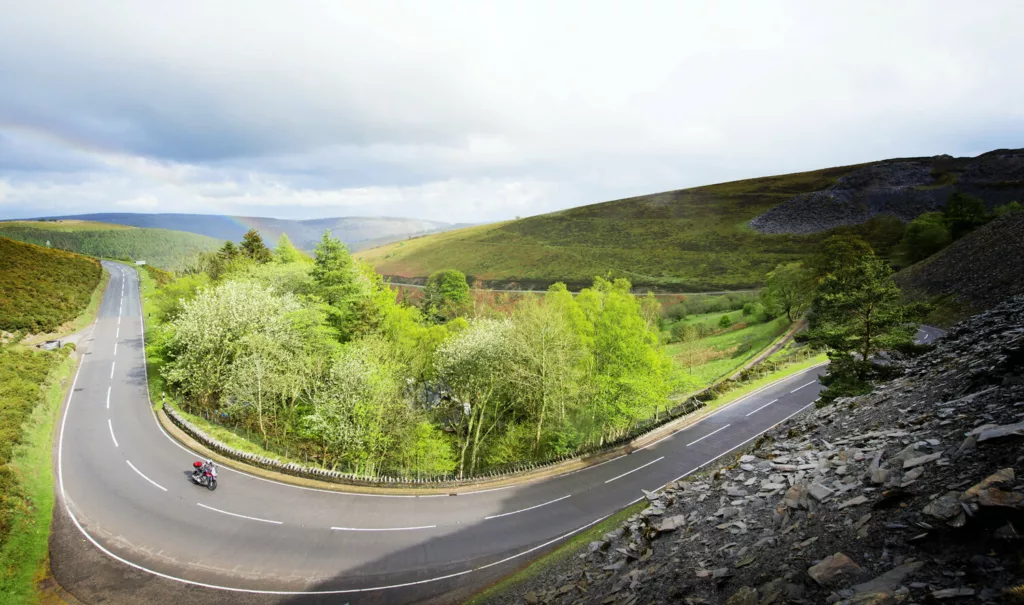Horseshoe Pass, a winding mountain road in North Wales, is a renowned destination for cyclists, motorists, and outdoor enthusiasts alike. With its challenging gradients, breathtaking views, and rich history, it has become a fixture in numerous races, including the prestigious hill climb events. This article will take you on a journey through the landscape, history, and racing heritage of this iconic Welsh climb.
Table of Contents
ToggleThe Horseshoe Pass Climb
Located near the town of Llangollen, Horseshoe Pass is a 6.1-kilometre (3.8-mile) stretch of the A542 road that rises to a peak altitude of 417 meters (1,368 feet) above sea level. With an average gradient of 5%, it presents a demanding but rewarding climb for cyclists. The ascent features several hairpin bends and switchbacks, with the steepest section reaching a gradient of 12.5%.
The climb’s name, Horseshoe Pass, is derived from its distinctive U-shaped curve as it wraps around the valley. This unique shape offers panoramic views of the surrounding countryside, making it a popular spot for sightseers and photographers.
History
Horseshoe Pass has a long history dating back to Roman times when it served as a route for soldiers traversing the rugged Welsh terrain. The current road was built in the early 19th century as part of the development of the wider transport network in North Wales, connecting the towns of Llangollen and Ruthin. In 1811, renowned civil engineer Thomas Telford was commissioned to improve the road, which helped to establish its reputation as a major route through the region.

Racing Heritage
Over the years, Horseshoe Pass has become a celebrated venue for various cycling races and events. It’s challenging gradients and captivating scenery make it an ideal location for testing the skills and stamina of cyclists.
One of the most famous races that feature Horseshoe Pass is the annual hill climb event organised by the Wrexham Road Club. This event attracts cyclists from all over the country who compete against the clock to complete the ascent in the fastest possible time. The Horseshoe Pass hill climb has become a rite of passage for many amateur and professional cyclists, pushing their physical and mental limits as they tackle the steep inclines.
In addition to the hill climb event, Horseshoe Pass has been a fixture in various road cycling races throughout the years, including the Tour of Britain, the UK’s most prestigious stage race. Professional cyclists from around the world have faced the challenge of Horseshoe Pass, making it an iconic landmark in the world of cycling.
The Horseshoe Pass Beyond Racing
Horseshoe Pass is more than just a racing venue; it is also a destination for cyclists seeking an enjoyable and scenic ride. The road offers a well-maintained surface and ample space for cyclists, making it a popular choice for recreational riders and touring cyclists. Moreover, the nearby Ponderosa Café, situated at the summit, provides a welcome respite for weary cyclists looking to refuel and enjoy the stunning views before descending.
Horseshoe Pass, with its unique landscape, challenging gradients, and storied history, holds a special place in the hearts of cyclists and outdoor enthusiasts. As a landmark of Welsh cycling and a testament to the region’s rich heritage, it continues to inspire and challenge those who dare to conquer its slopes. Whether participating in a hill climb event, racing on a professional stage, or simply enjoying a leisurely ride, cyclists of all levels can appreciate the beauty and excitement of this iconic climb.






